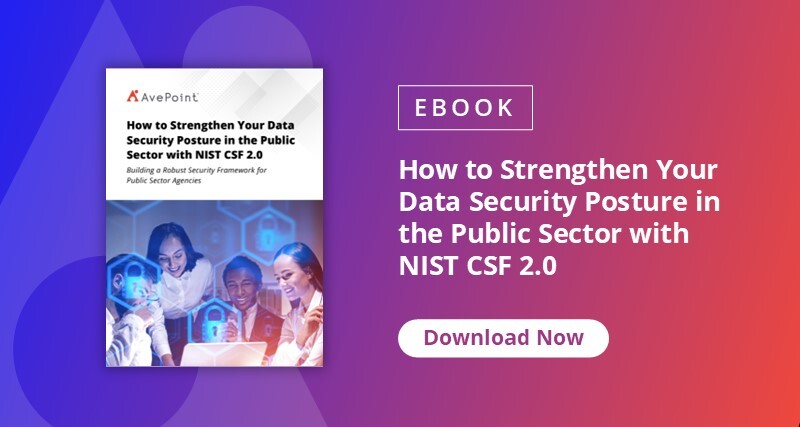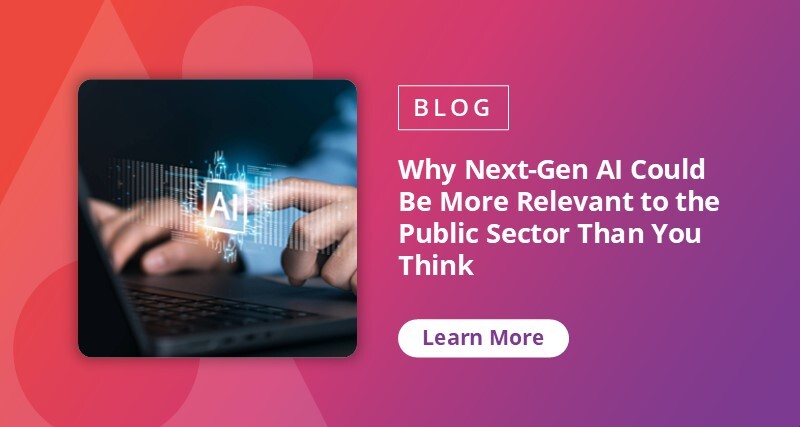Imagine trying to run a café where no one knows who’s ordering what, the espresso machine talks back, and half your beans are stored in three different back rooms nobody has the keys to. That’s kind of what it feels like rolling out artificial intelligence in the public sector without a strategy.
But just like running a successful café requires more than a shiny espresso machine, deploying AI in the public sector demands more than cutting-edge algorithms. It’s about crafting a thoughtful experience — one that balances innovation with accountability, ensuring your operations stay efficient and secure without compromising trust.
The key lies in equipping teams to navigate the complexities of AI adoption, from streamlining workflows to addressing ethical questions, all while staying ahead of emerging challenges. And much like a perfect latte depends on precision and care, the success of AI initiatives hinges on a blend of strategy, governance, and human adaptability.
Timothy Boettcher and I recently sat down to talk – not only about joe and jokes – but about what a tough day might look like for someone in the public sector (like David Reynolds, looking to roll out AI for his org) in our video below:
How to Roll Out Artificial Intelligence in the Public Sector
1. Start with a Solid Blend (Know Your Use Case)
David’s team, like many in government, is swimming in a sea of disconnected systems, each with its own challenges and redundancies. Your first step? Pinpoint precisely where AI can have real, measurable impact. Is it mitigating cyber risks, automating the classification of sensitive documents, or streamlining service response times for citizens?
With the right approach, AI can act as the bridge between operational chaos and strategic clarity. But clarity starts with a well-defined use case — a solid brew base that ensures your efforts are targeted and your resources are wisely invested. This foundation will help pave the way for meaningful transformation, setting the stage for AI to deliver results that genuinely matter to your team and the public you serve.
2. Use the Right Filters (Governance, TRiSM, and Compliance)
Without proper filters, even good ideas turn bitter. Frameworks like Gartner’s TRiSM (Trust, Risk, and Security Management for AI) go beyond simple oversight and compliance checkboxes, serving as the cornerstone for responsible AI integration. These frameworks ensure that your AI systems are transparent, governed effectively, and secure from potential threats, all while adhering to the many regulations that define public sector operations.
TRiSM acts like a finely tuned sieve (basically a sifter for your beans), carefully separating the useful from the risky, managing trust without compromising efficiency. It’s about creating a system where innovation thrives but does so safely, ensuring that every decision is accountable and every risk is mitigated. In an era where ethical AI is non-negotiable, having such filters in place is the difference between sustainable progress and chaotic missteps.
3. Don't Forget the Cream (Data Security Posture Management)
If TRiSM is your filter, Data Security Posture Management (DSPM) is your cream — it smooths things out and adds visibility, ensuring every element blends seamlessly into your operations. DSPM provides critical oversight for tracking who’s sharing sensitive data externally, pinpointing where that data resides across a complex web of systems, and identifying potential vulnerabilities before they become problems. For teams like David’s, this indispensable safeguard keeps AI from wandering into uncharted or dangerous territory, preventing a bitter taste from unexpected breaches.
Think of DSPM as the barista who not only knows exactly where every bean came from but can trace the journey of every grain of sugar and every drop of milk poured into the final brew. It ensures that each ingredient — whether it’s data, compliance measures, or security protocols — is accounted for and used responsibly. By enabling granular control and proactive management of data flow, DSPM doesn’t just enhance the flavor of your AI initiatives; it ensures that the results are palatable and trustworthy across the board, leaving nothing to chance.

4. Train the Baristas (Prepare Your People)
Even the best espresso machine can’t make a good cup without trained hands. AI changes how people work, and that shift can often feel daunting, raising questions, sparking concerns, and sometimes even resistance. The key to a successful rollout lies in fostering understanding and empowering teams to embrace these changes. Proper training can transform apprehension into confidence, helping individuals see how AI isn’t about replacing their expertise but rather augmenting their capabilities to focus on higher-value work.
For David’s team, it’s not just about presenting a set of dashboards or analytics — it’s about providing clear direction, actionable insights, and instilling AI confidence. Leaders must ensure their teams understand not only the technical aspects but also the broader vision of how AI can drive meaningful outcomes. Proper preparation ensures the blend is smooth, balanced, and ultimately a success.
5. Taste Before You Serve (Start Small and Scale)
Pilot projects are your sample sips, the critical test runs that allow you to assess and refine your approach before committing to a full-scale rollout. These smaller-scale implementations provide a controlled environment to evaluate key capabilities of your AI system: its ability to detect and respond to threats in real-time, its effectiveness in managing access controls, and how well it supports compliance measures unique to your organization.
By starting small, you gain the flexibility to adapt processes and address unexpected challenges without risking overwhelming your team or jeopardizing operational stability. Take the time to gather feedback from your team, fine-tune workflows, and ensure the system integrates seamlessly into your existing operations. If your pilot project reveals the need for deeper customization or enhanced technical capabilities, it may be the right time to hire AI developers who can tailor the system to your specific requirements and ensure a smoother transition to full deployment. Remember, building confidence at this stage sets the tone for scalability and success. Don’t brew for the whole town until you’ve perfected the house blend.
Final Sip: This Isn’t Just an IT Initiative — It’s Your Future Data Security Strategy
Here’s the bigger picture: AI is more than just a new tool. It’s a new security perimeter. The decisions you make today — how you govern, classify, and protect your data — will shape how secure your agency is five years from now. When you build trust and control into your AI systems from day one, you're not just solving today’s problems, but setting the foundation for a resilient, scalable, and secure data future.
David Reynolds and leaders like him understand: AI isn’t just an espresso shot of efficiency. It’s the entire new roast. Make sure your data is ready for an AI rollout your agency can trust.


